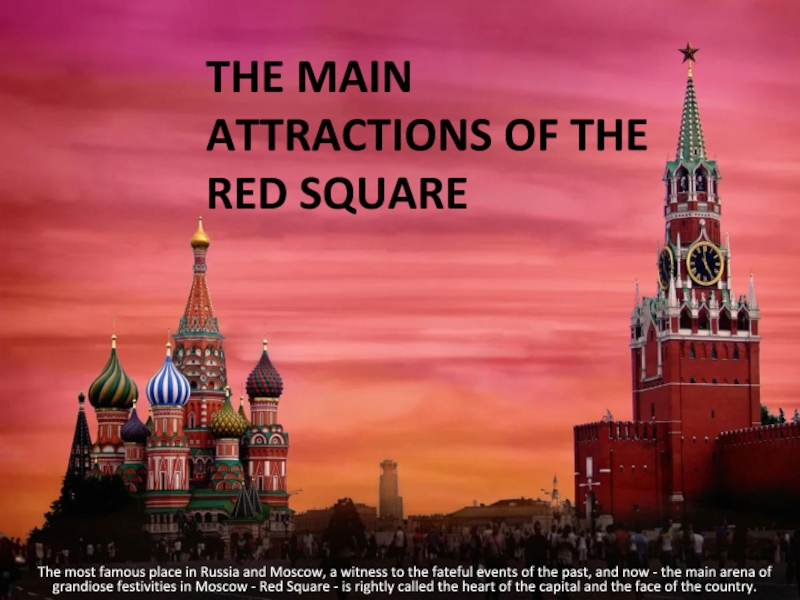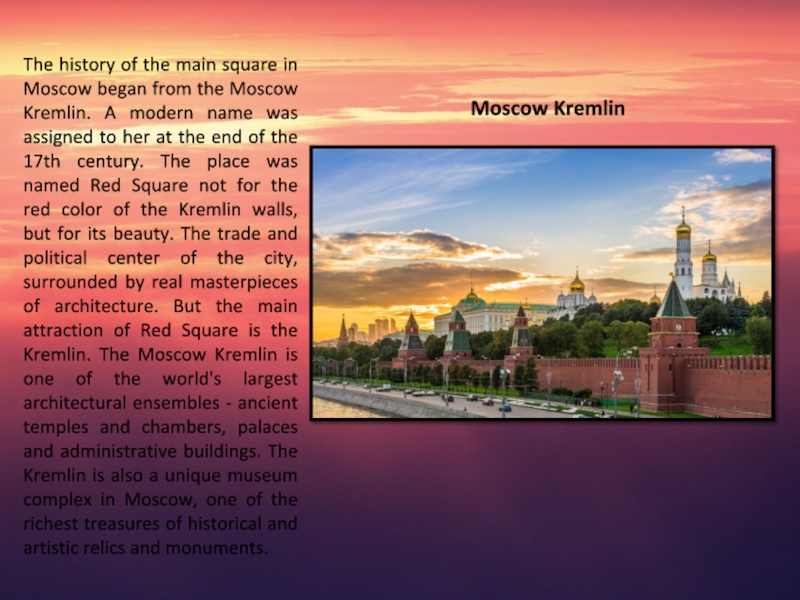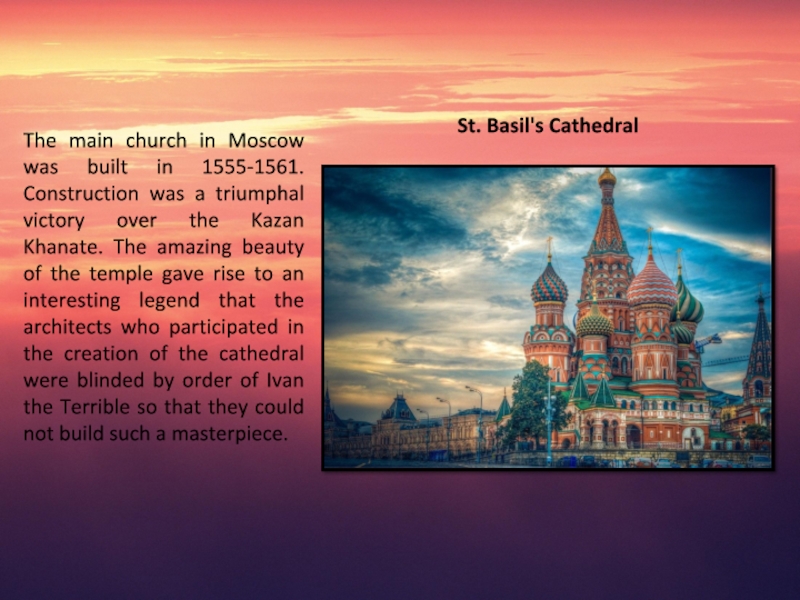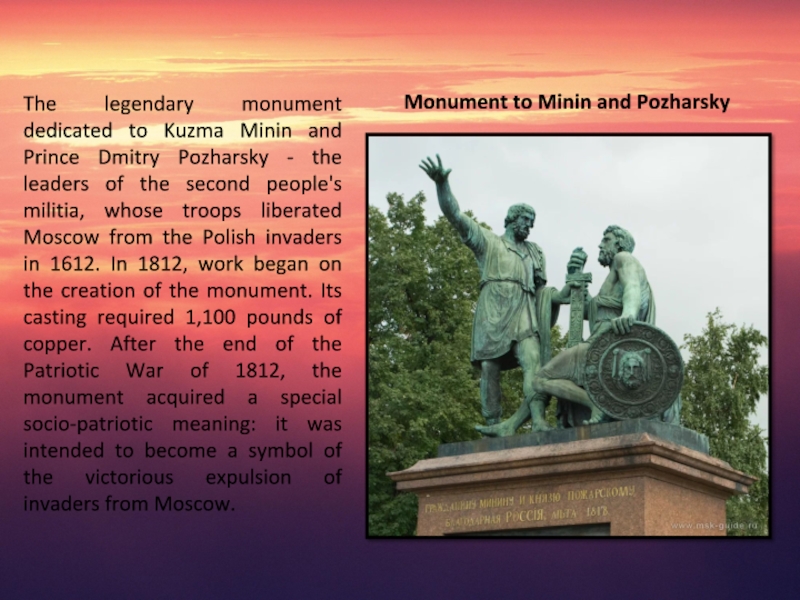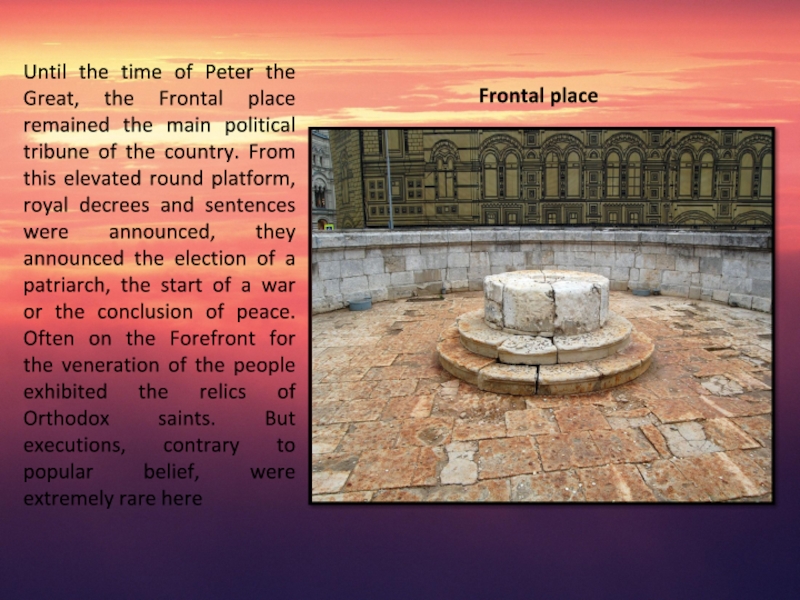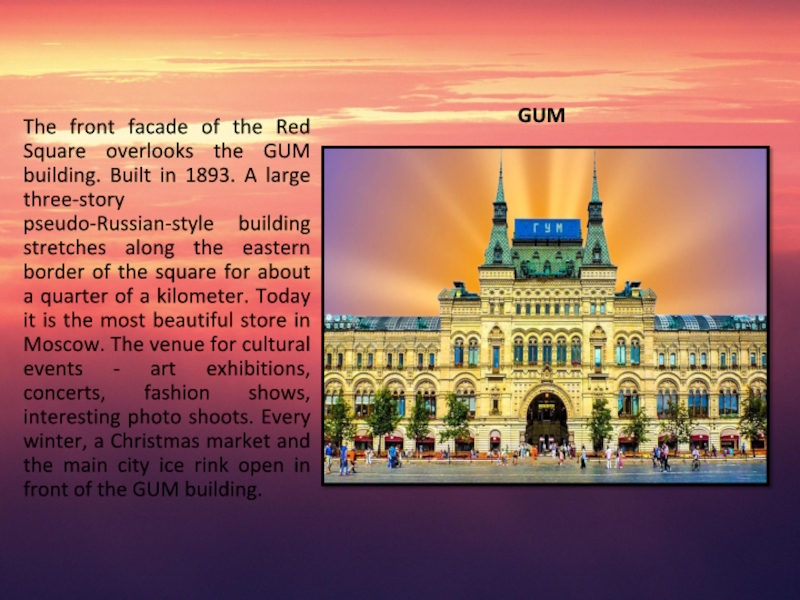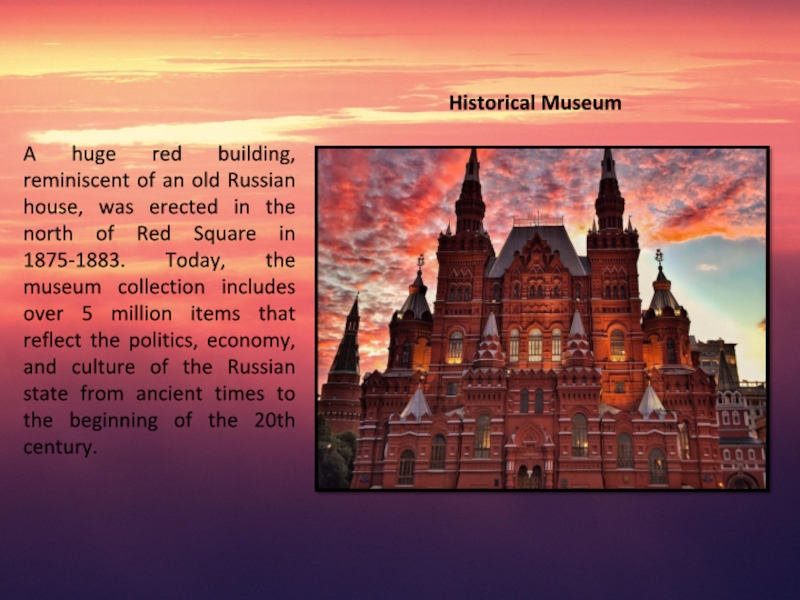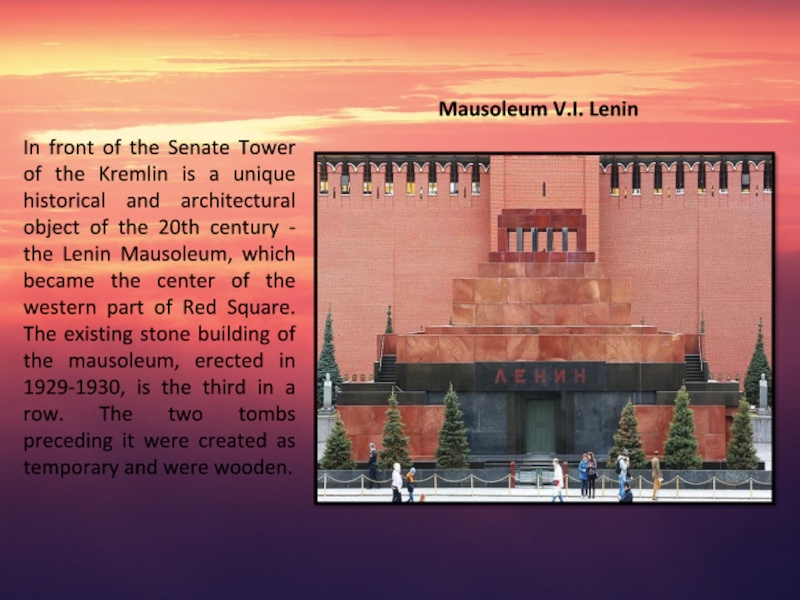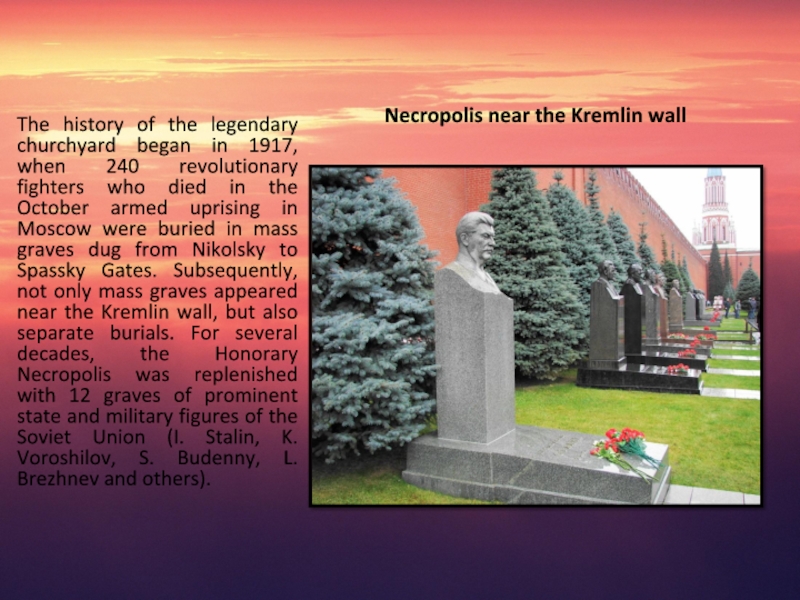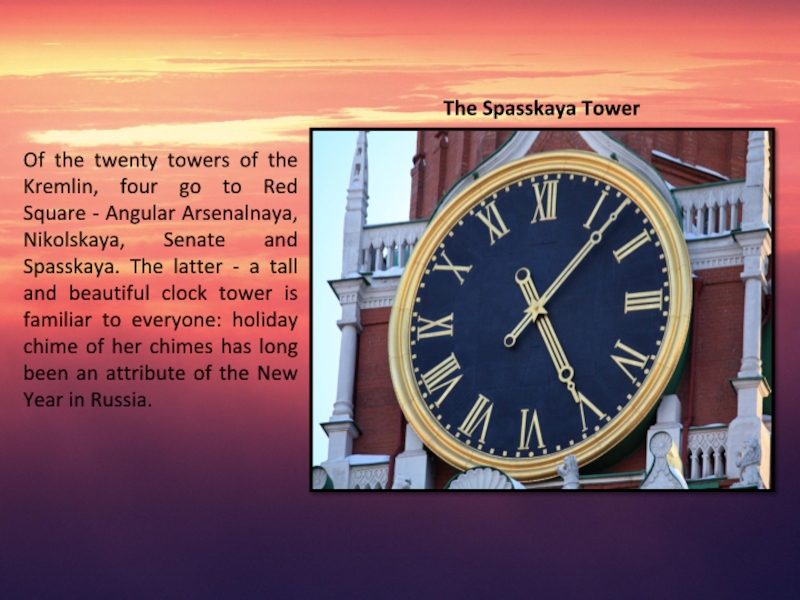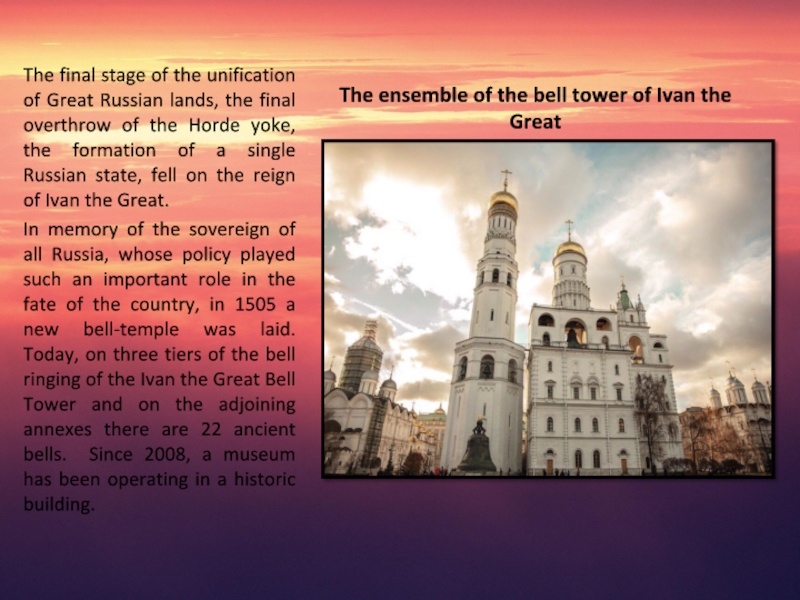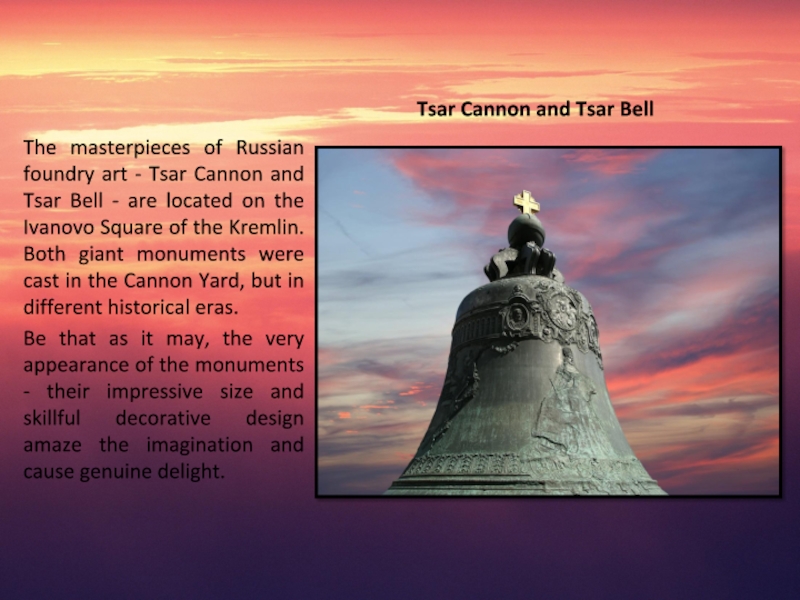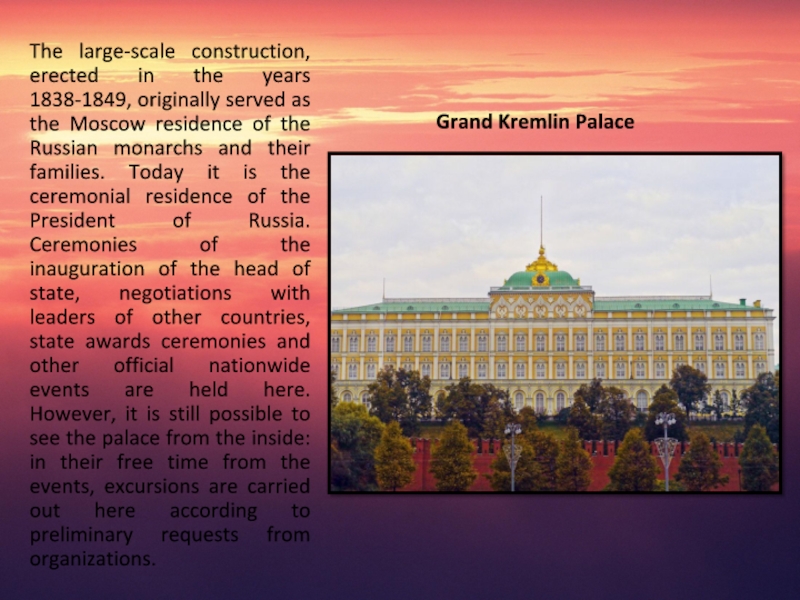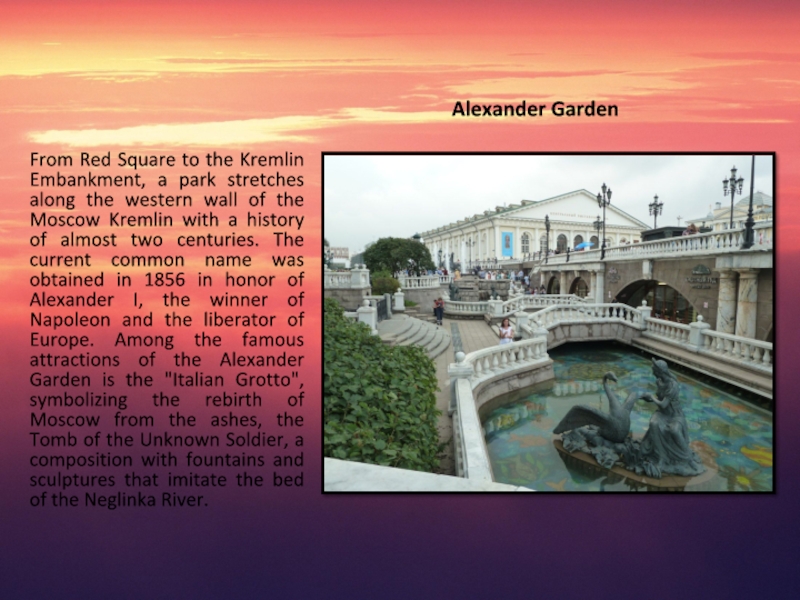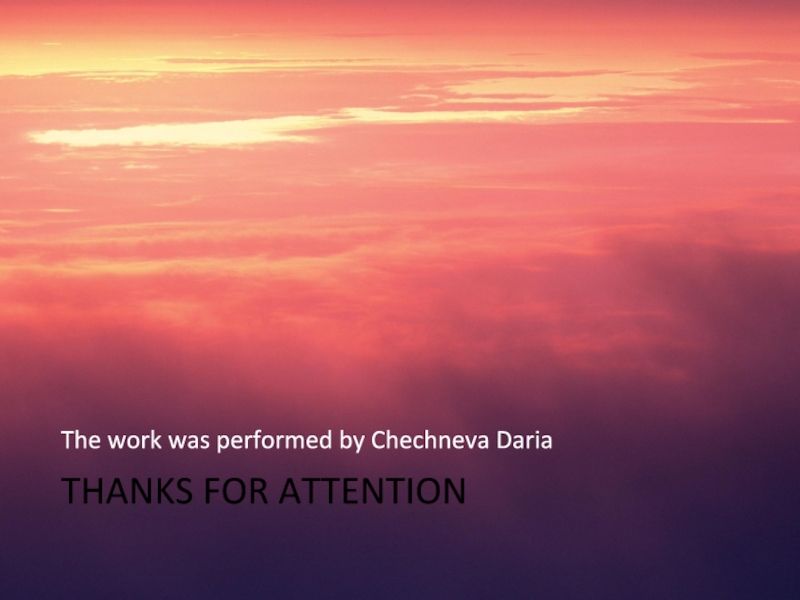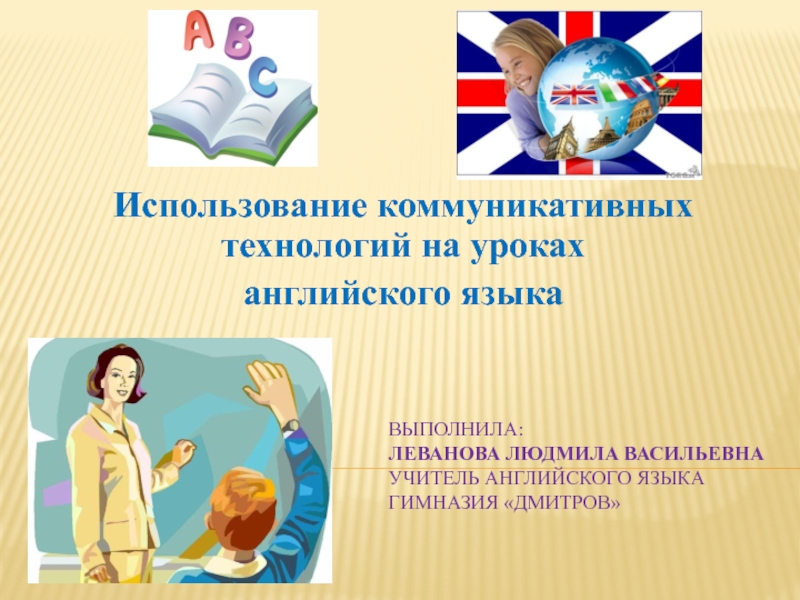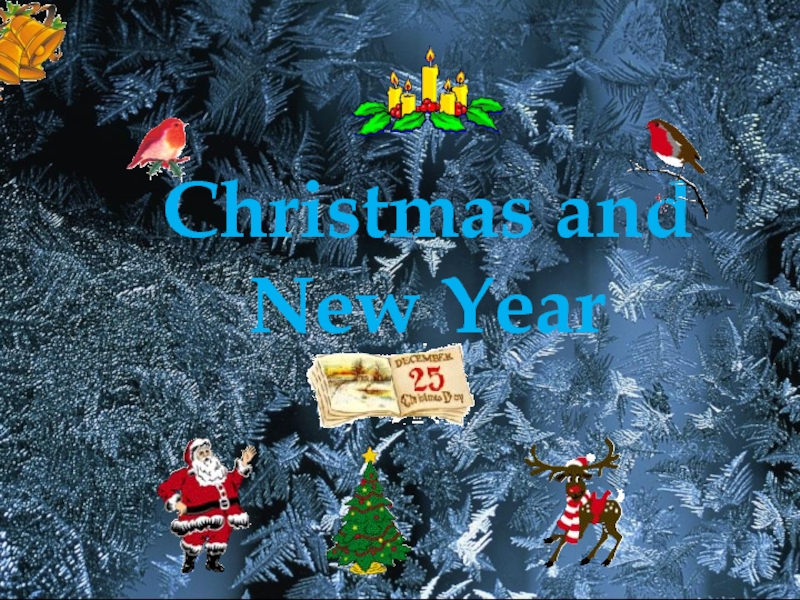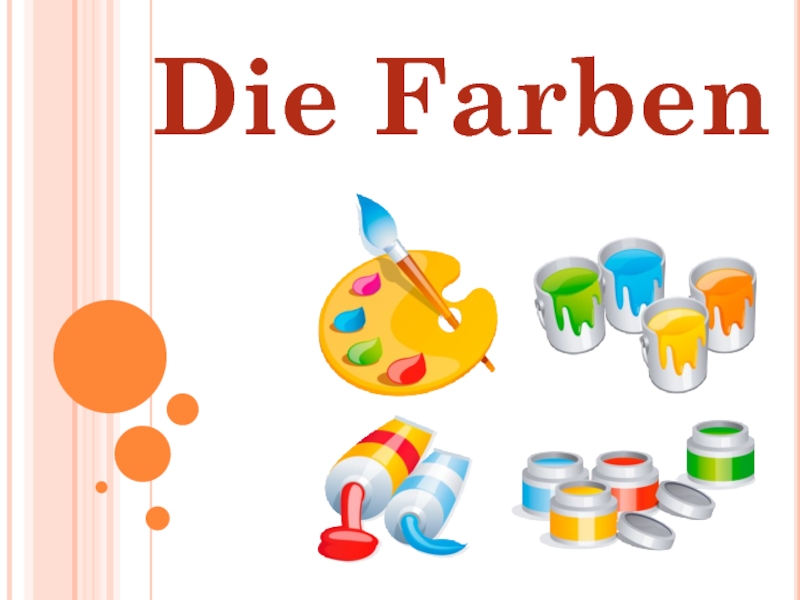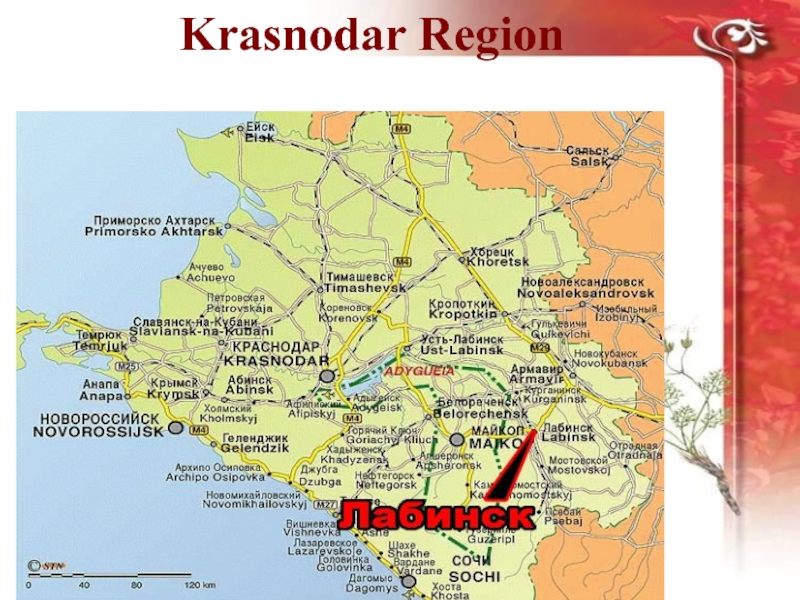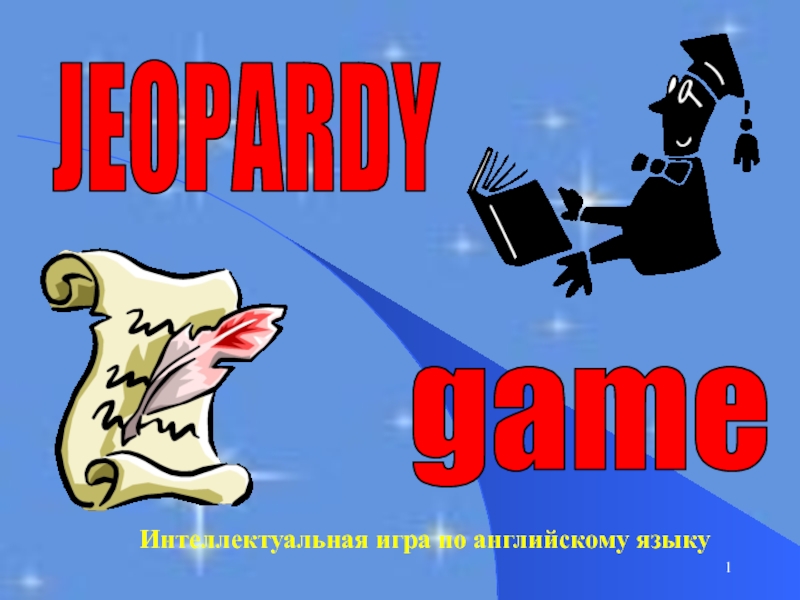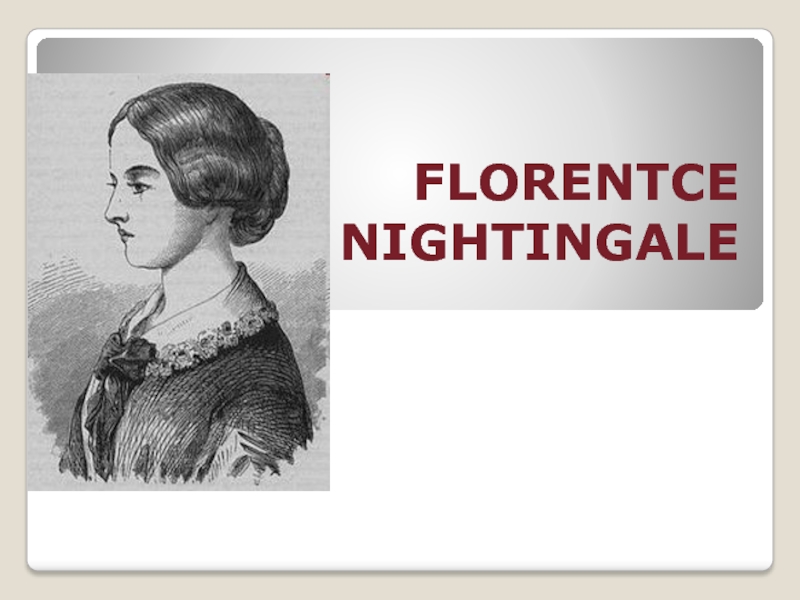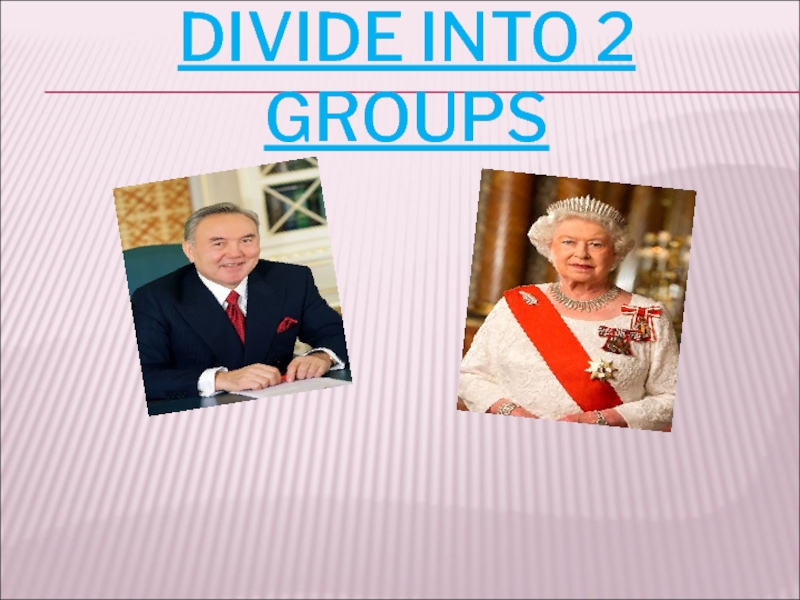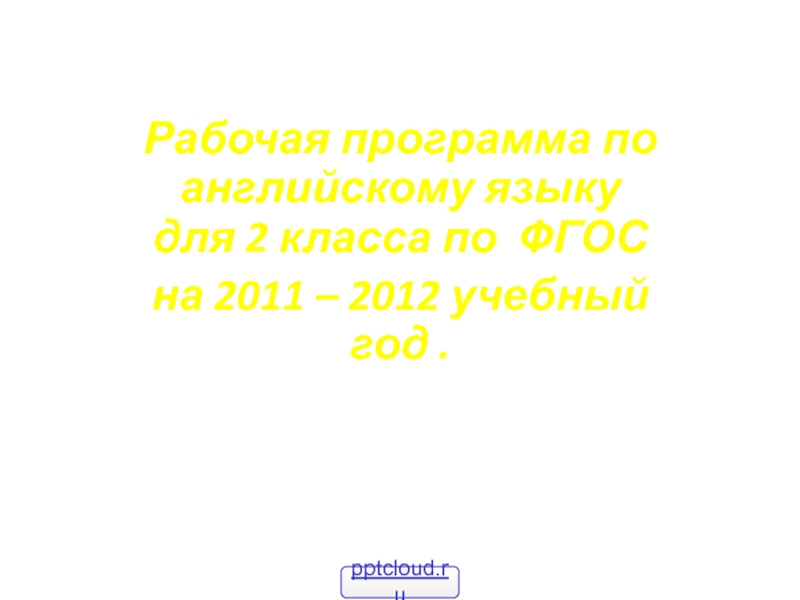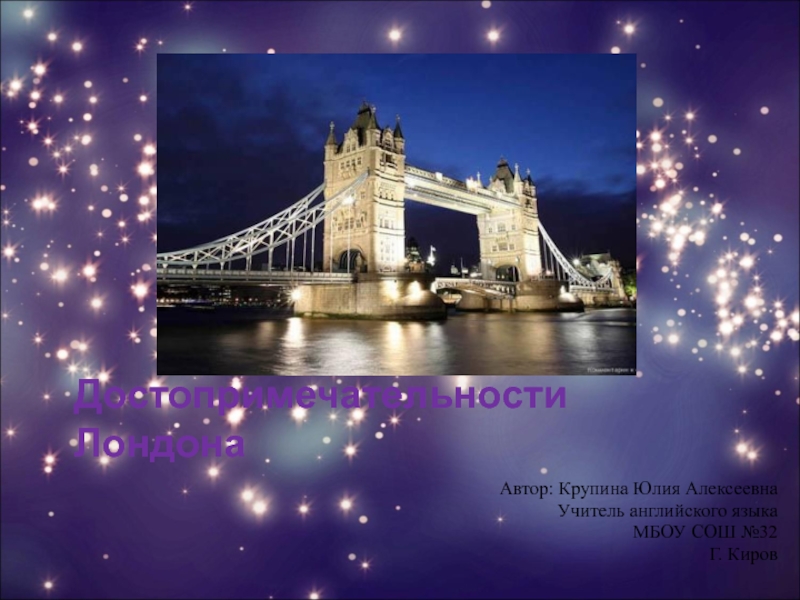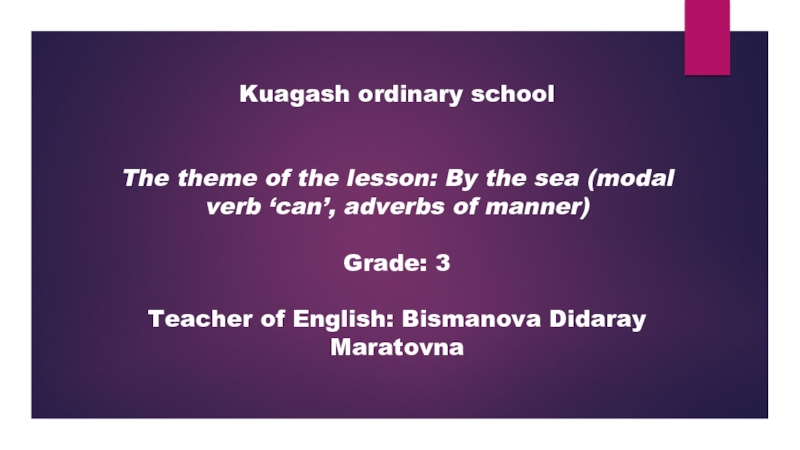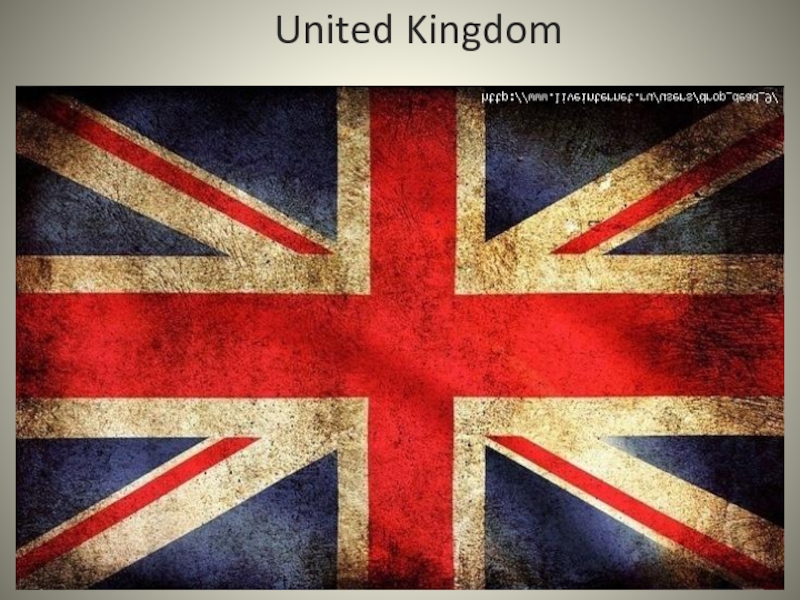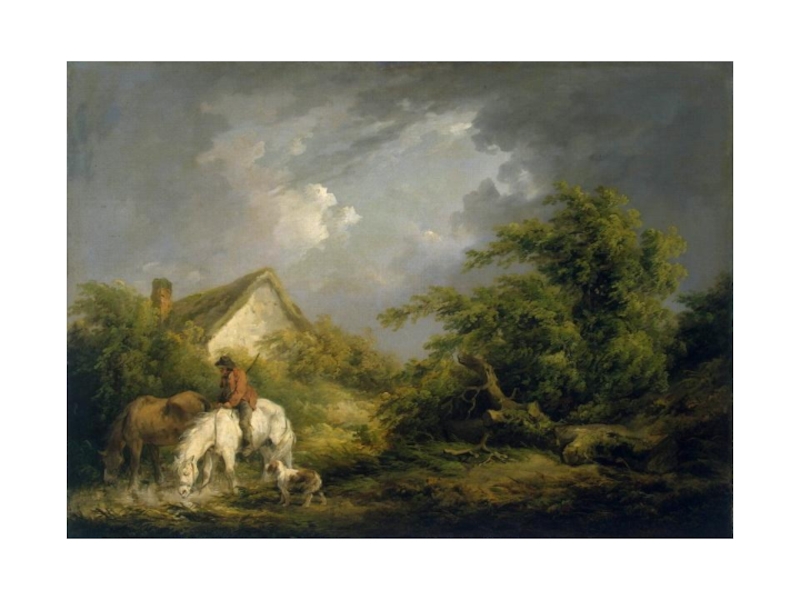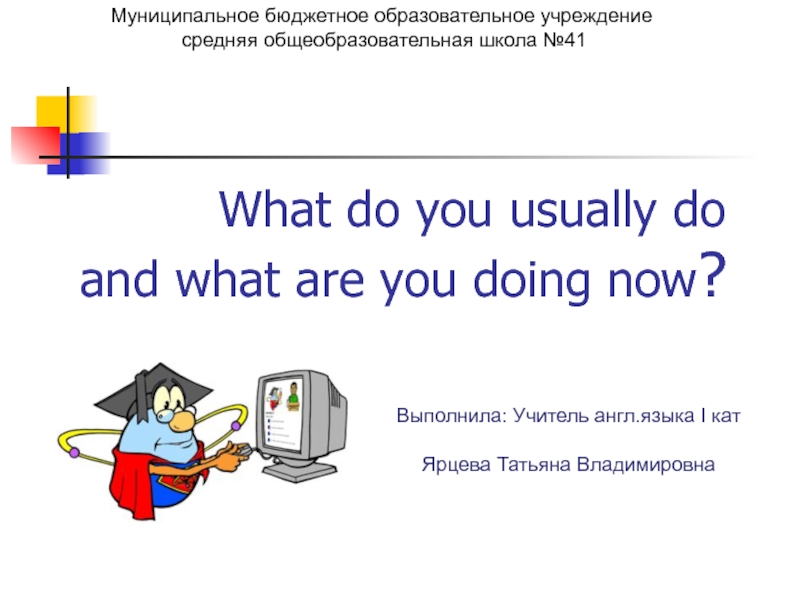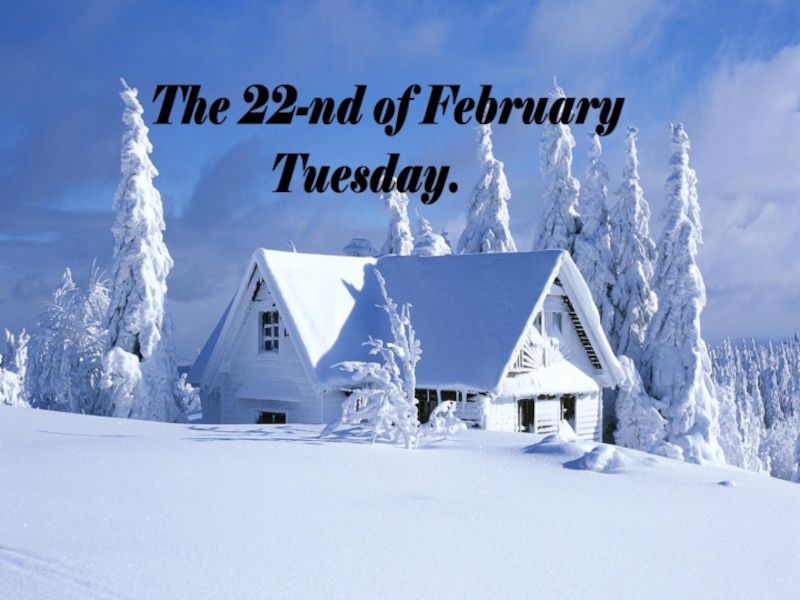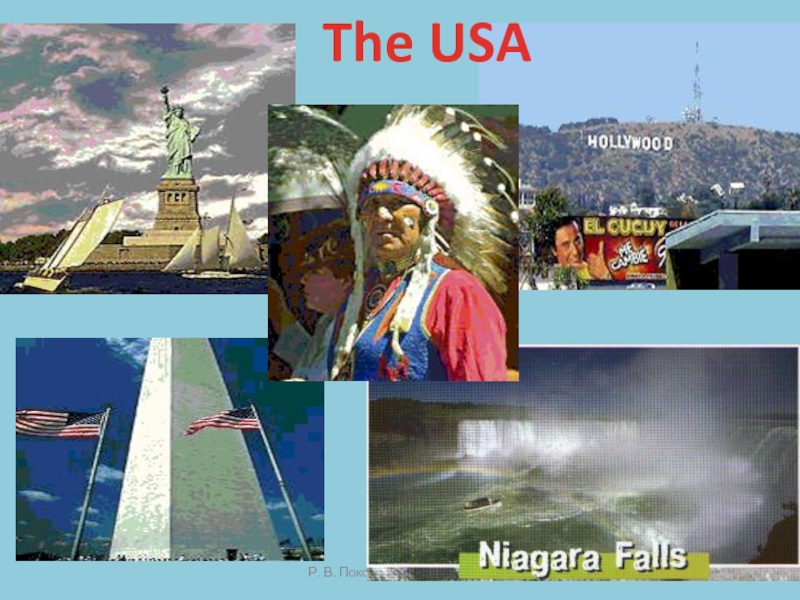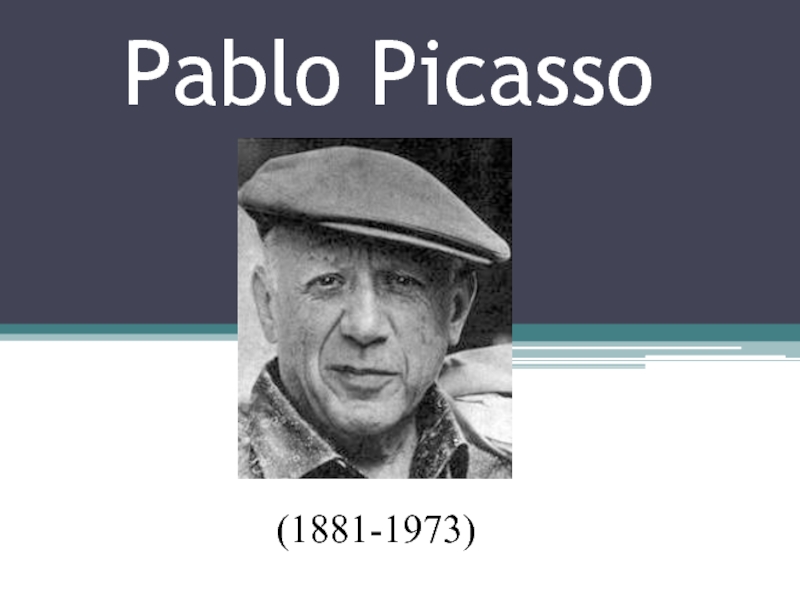Разделы презентаций
- Разное
- Английский язык
- Астрономия
- Алгебра
- Биология
- География
- Геометрия
- Детские презентации
- Информатика
- История
- Литература
- Математика
- Медицина
- Менеджмент
- Музыка
- МХК
- Немецкий язык
- ОБЖ
- Обществознание
- Окружающий мир
- Педагогика
- Русский язык
- Технология
- Физика
- Философия
- Химия
- Шаблоны, картинки для презентаций
- Экология
- Экономика
- Юриспруденция
The main attractions of the Red Square
Содержание
- 1. The main attractions of the Red Square
- 2. Moscow KremlinThe history of the main square
- 3. St. Basil's Cathedral The main church in
- 4. Monument to Minin and PozharskyThe legendary
- 5. Frontal placeUntil the time of Peter the
- 6. GUMThe front facade of the Red Square
- 7. Historical MuseumA huge red building, reminiscent of
- 8. Mausoleum V.I. LeninIn front of the Senate
- 9. Necropolis near the Kremlin wallThe history of
- 10. The Spasskaya TowerOf the twenty towers of
- 11. The ensemble of the bell tower of
- 12. Tsar Cannon and Tsar BellThe masterpieces
- 13. Grand Kremlin PalaceThe large-scale construction, erected in
- 14. Alexander Garden From Red Square to the
- 15. Thanks for attentionThe work was performed by Chechneva Daria
- 16. Скачать презентанцию
Moscow KremlinThe history of the main square in Moscow began from the Moscow Kremlin. A modern name was assigned to her at the end of the 17th century. The place was
Слайды и текст этой презентации
Слайд 2Moscow Kremlin
The history of the main square in Moscow began
from the Moscow Kremlin. A modern name was assigned to
her at the end of the 17th century. The place was named Red Square not for the red color of the Kremlin walls, but for its beauty. The trade and political center of the city, surrounded by real masterpieces of architecture. But the main attraction of Red Square is the Kremlin. The Moscow Kremlin is one of the world's largest architectural ensembles - ancient temples and chambers, palaces and administrative buildings. The Kremlin is also a unique museum complex in Moscow, one of the richest treasures of historical and artistic relics and monuments.Слайд 3St. Basil's Cathedral
The main church in Moscow was built in
1555-1561. Construction was a triumphal victory over the Kazan Khanate.
The amazing beauty of the temple gave rise to an interesting legend that the architects who participated in the creation of the cathedral were blinded by order of Ivan the Terrible so that they could not build such a masterpiece.Слайд 4
Monument to Minin and Pozharsky
The legendary monument dedicated to Kuzma
Minin and Prince Dmitry Pozharsky - the leaders of the
second people's militia, whose troops liberated Moscow from the Polish invaders in 1612. In 1812, work began on the creation of the monument. Its casting required 1,100 pounds of copper. After the end of the Patriotic War of 1812, the monument acquired a special socio-patriotic meaning: it was intended to become a symbol of the victorious expulsion of invaders from Moscow.Слайд 5Frontal place
Until the time of Peter the Great, the Frontal
place remained the main political tribune of the country. From
this elevated round platform, royal decrees and sentences were announced, they announced the election of a patriarch, the start of a war or the conclusion of peace. Often on the Forefront for the veneration of the people exhibited the relics of Orthodox saints. But executions, contrary to popular belief, were extremely rare hereСлайд 6GUM
The front facade of the Red Square overlooks the GUM
building. Built in 1893. A large three-story pseudo-Russian-style building stretches
along the eastern border of the square for about a quarter of a kilometer. Today it is the most beautiful store in Moscow. The venue for cultural events - art exhibitions, concerts, fashion shows, interesting photo shoots. Every winter, a Christmas market and the main city ice rink open in front of the GUM building.Слайд 7Historical Museum
A huge red building, reminiscent of an old Russian
house, was erected in the north of Red Square in
1875-1883. Today, the museum collection includes over 5 million items that reflect the politics, economy, and culture of the Russian state from ancient times to the beginning of the 20th century.Слайд 8Mausoleum V.I. Lenin
In front of the Senate Tower of the
Kremlin is a unique historical and architectural object of the
20th century - the Lenin Mausoleum, which became the center of the western part of Red Square. The existing stone building of the mausoleum, erected in 1929-1930, is the third in a row. The two tombs preceding it were created as temporary and were wooden.Слайд 9Necropolis near the Kremlin wall
The history of the legendary churchyard
began in 1917, when 240 revolutionary fighters who died in
the October armed uprising in Moscow were buried in mass graves dug from Nikolsky to Spassky Gates. Subsequently, not only mass graves appeared near the Kremlin wall, but also separate burials. For several decades, the Honorary Necropolis was replenished with 12 graves of prominent state and military figures of the Soviet Union (I. Stalin, K. Voroshilov, S. Budenny, L. Brezhnev and others).Слайд 10The Spasskaya Tower
Of the twenty towers of the Kremlin, four
go to Red Square - Angular Arsenalnaya, Nikolskaya, Senate and
Spasskaya. The latter - a tall and beautiful clock tower is familiar to everyone: holiday chime of her chimes has long been an attribute of the New Year in Russia.Слайд 11The ensemble of the bell tower of Ivan the Great
The
final stage of the unification of Great Russian lands, the
final overthrow of the Horde yoke, the formation of a single Russian state, fell on the reign of Ivan the Great.In memory of the sovereign of all Russia, whose policy played such an important role in the fate of the country, in 1505 a new bell-temple was laid. Today, on three tiers of the bell ringing of the Ivan the Great Bell Tower and on the adjoining annexes there are 22 ancient bells. Since 2008, a museum has been operating in a historic building.
Слайд 12
Tsar Cannon and Tsar Bell
The masterpieces of Russian foundry art
- Tsar Cannon and Tsar Bell - are located on
the Ivanovo Square of the Kremlin. Both giant monuments were cast in the Cannon Yard, but in different historical eras.Be that as it may, the very appearance of the monuments - their impressive size and skillful decorative design amaze the imagination and cause genuine delight.
